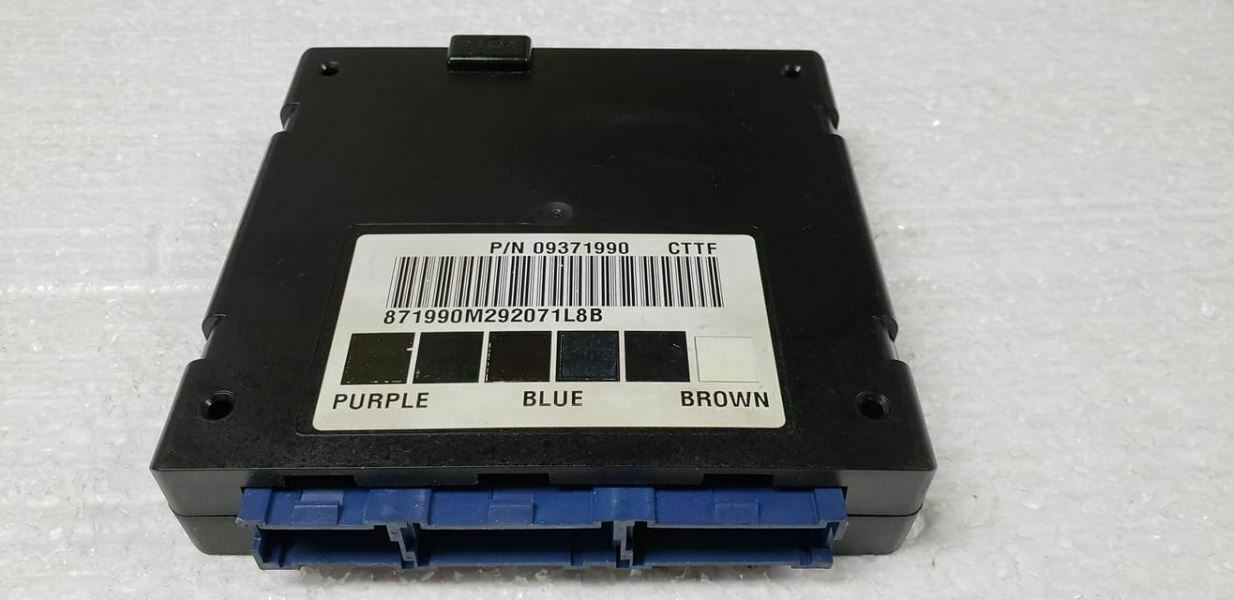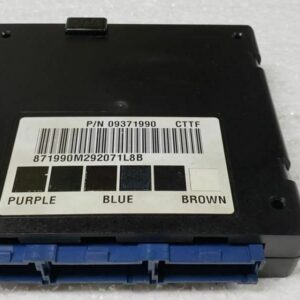Are you tired of chasing electrical gremlins in your truck? Flickering lights, a security system that acts up, power windows with a mind of their own, or an engine that refuses to start can all point to one culprit: a failing Body Control Module (BCM). As the central hub for your vehicle’s body electronics, a faulty BCM can cause a host of frustrating and unpredictable problems. This isn’t just an annoyance; it’s a reliability issue that needs a solid fix.
This is a direct-fit replacement Body Control Module, arriving at your door pre-programmed to your truck’s specific Vehicle Identification Number (VIN). We handle the complex part for you. Simply provide us with your VIN after purchase, and our technicians will flash the module with the latest, most stable software from GM. This means you can skip the expensive trip to the dealership and the hassle of their programming fees.
From the Diagnostic Bay: The Case of the Haunted S10
I remember a 2001 S10 that came into my shop a few years back. The owner was at his wit’s end. The radio would turn on and off by itself, the dome light would stay on, and occasionally, the security light would flash, preventing the truck from starting. He’d already replaced the battery and checked the grounds. After connecting my scan tool, I saw a handful of U-codes (communication loss codes) pointing to the BCM. These modules, especially on this GM platform, are notorious for internal solder joint failures over time, leading to these exact kinds of intermittent, maddening issues. A new, correctly programmed BCM solved every single problem. It’s a classic fix I’ve performed countless times.
Is Your Truck Showing These Symptoms?
A failing BCM can manifest in many ways. If you’re experiencing any of the following, this module is the likely solution:
- ✔ Erratic or non-functional interior/exterior lights
- ✔ Power windows, locks, or mirrors working intermittently
- ✔ The security system preventing the engine from starting (flashing security light)
- ✔ The radio or instrument cluster behaving strangely
- ✔ False warning lights appearing on the dashboard
- ✔ Diagnostic Trouble Codes (DTCs) related to communication loss, such as U1000
A Straightforward Guide to Installation
For the confident DIYer, replacing the BCM is a manageable job. In the 2001 S10/S15/Sonoma, it’s typically located behind the center of the dashboard.
- Safety First: Always disconnect the negative terminal from your vehicle’s battery before beginning any electrical work.
- Access the Module: You will need to remove the necessary dash trim panels to gain access to the BCM. On the S10, this is usually the panel below the steering column or near the center console.
- Disconnect and Remove: Carefully unplug the electrical connectors from the old BCM. They have locking tabs that need to be depressed. Once disconnected, unbolt or unclip the module from its mounting bracket.
- Install the New BCM: Mount your new, pre-programmed module in the same location and securely reconnect all electrical connectors. You should hear a click as they lock into place.
- Reconnect and Test: Reconnect the negative battery terminal. Turn the key to the ‘ON’ position and test all body functions—lights, locks, windows, radio, etc.—to confirm proper operation.
Important Post-Installation Notes
Because this module is central to many systems, a couple of additional steps may be required after installation:
- Airbag System Sync: If your airbag warning light is illuminated after installation, a professional scan tool is needed to perform the “Setup SDM Primary Key in BCM” procedure. This syncs the new BCM with the airbag system.
- Brake Pedal Position Relearn: On some models, a brake pedal position sensor relearn may be necessary to ensure your brake lights and traction control system function correctly.
As a best practice, always consult a factory service manual for procedures specific to your exact vehicle.
Verified Vehicle Compatibility
This module is a direct replacement for service numbers 19208539, 9371990, and 9385236. It is guaranteed to fit the following vehicles and options:
- 2001 S10/S15/SONOMA – Body Control (BCM); (center dash)
- 2001 BLAZER S10/JIMMY S15 – Body Control (BCM); (center dash), ID 9385236
- 2001 BRAVADA – Body Control (BCM); (center dash)
- 2001 ASTRO – Body Control (BCM); (LH dash)
- 2001 SAFARI (GMC) – Body Control (BCM); (LH dash)
- 2000 SILVERADO 1500 PICKUP – Body Control (BCM); (LH dash), ID 9371990 or 9385236
- 2000 SIERRA 1500 PICKUP – Body Control (BCM); (LH dash), ID 9371990 or 9385236
- 2000 SILVERADO 2500 PICKUP – Body Control (BCM); (LH dash), ID 9385236
- 2000 SIERRA 2500 PICKUP – Body Control (BCM); (LH dash), ID 9385236
- 2000 TAHOE – Body Control (BCM); (LH dash), ID 9385236
- 2000 YUKON – Body Control (BCM); exc. Denali; (LH dash), ID 9385236
- 2000 SUBURBAN 1500/2500 – Body Control (BCM); (LH dash), ID 9385236
- 2000 YUKON XL 1500/2500 – Body Control (BCM); (LH dash), ID 9385236
Frequently Asked Questions
Why do you need my VIN?
Your VIN is essential for us to program the Body Control Module with the correct software and vehicle-specific options from GM. This ensures it communicates properly with all other modules in your truck, making the installation process as simple as possible.
Is this a plug-and-play part?
Yes, this BCM is programmed before shipping, so in most cases, it is plug-and-play. However, as noted, some vehicles may require an additional relearn procedure for the airbag or brake systems, which requires a professional scan tool.
Do I need to return my old BCM?
No, there is no core charge for this part. You can keep your original module.
What tools are needed for the airbag or brake relearn procedures?
These procedures require a bi-directional professional diagnostic scan tool, such as a GM Tech 2 or equivalent high-end scanner. Standard code readers cannot perform these functions.
Will this fix my ‘Service 4WD’ light?
While the BCM can be involved in various electrical systems, a ‘Service 4WD’ light is more commonly caused by the transfer case control module (TCCM) or the encoder motor on these trucks. It’s important to have the correct system scanned for codes to ensure you’re replacing the right part.



